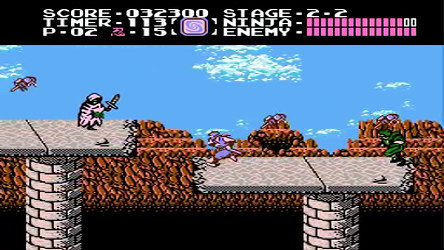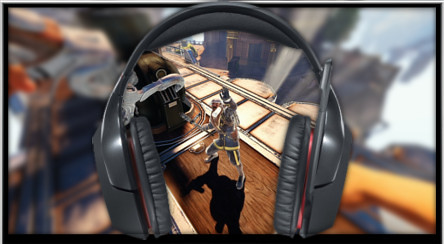 |
| Does it matter if the background music is coming from a rock band or a record player? |
Note: This article contains potential spoilers for K-On!, Tamako Market and Toradora.
It’s not uncommon for Anime series to use music as a way to enhance the mood of a scene. In an episode of Tamako Market, for example, the title character meets with a classmate in a coffee shop. Asagiri had to spend the last afternoon with Tamako and her family. Despite her social anxiety, she managed to have fun and wants to thank her. Asagiri tries to gather the strength to express this, and she eventually does. To her embarrassment though, her words come out in an awkwardly loud voice. Seeing her reaction, Tamako comforts her with a kind smile and a playful “I did too”. The scene is filled with cute facial expressions and gestures. It’s also accompanied by a slow but beautiful piano piece. The music feels sad enough to increase our sympathy for Asagiri, and appreciate Tamako’s kindness; making the interactions even more adorable. Musical attributes like the instrument being played or it’s tempo are frequently attributed with this type of effects. But there might be another factor in play.
Tamako and her friends visit this coffee shop frequently. During each of these scenes, a record player is shown either being set-up or playing tracks from different genres. Explaining where the background music is coming from might have the purpose of presenting the owner as a sophisticated and wise individual. Which makes sense given the role of passive counselor he plays in the series. But there could be another reason. Film theorists believe that, when music is unexplained, it appears as an obvious attempt to manipulate the audience. Placing its source within the character’s environment should reduce this perception, making it more effective. The idea is supported by an experiment in which a chase scene in a mall was perceived as more tense, when the music sounded like it came from the building speakers (Tan, Spackman, & Wakefield, 2008) (1). It’s possible then that showing the owner picking up an album and setting it up made the referred segments in Tamako Market more emotionally intense. Sadly, directors can’t put a record player or a loudspeaker on every single scene. There are, nevertheless, other, less mechanic alternatives.
 |
| Tamako Market's team went as far as composing a sixties-style song, hiring a french interpreter and designing a fake album cover, just to give the right background to another, bitter-sweet, scene. |
It’s not unusual for series to include musicians among their cast of characters; providing another method for inserting music into the story. Series about bands, like K-On!, have the advantage of being able to explain the presence of songs through rehearsal and concert scenes (2). The plot doesn’t necessarily have to revolve around music though. The fantasy drama Angel Beats!, for example, has a couple of characters capable of singing and playing instruments, ready to perform as soon as the plot allows it. Animated musicians don’t even have to be that skilled. In an episode of Tamako Market, the protagonist's father is revealed to have composed a song for his late wife, while they were both in high-school. His performance, shown through flashbacks, is clearly amateurish. But instead of disrupting the story, it ends up making it more believable and endearing.
Including an animated performance might have other benefits. People tend to rate acapella or instrumental compositions better when they are able to see the interpreter (Wapnick, Darrow, Kovacs, & Dalrymple, 1997; Wapnick, Mazza, & Darrow, 1998). And while, in the case of instrumental melodies, this doesn’t make people experience more positive, tense or exciting moods (Vines, Krumhansl, Wanderlev, Dalca, & Levitin, 2011; Vuoskoski, Gatti, Spence, & Clarke, 2016), it can make the audience more interested on the music, or even happier, depending on how expressive the performer is (Broughton & Stevens, 2009; Vines, Krumhansl, Wanderlev, Dalca, & Levitin, 2011). The results suggest that the presence of a performer adds very little to the experience of music, at least in the case of single-instrument pieces. Interestingly, they also imply that, when their appearance does make a difference, it has something to do with the way they move (3).
 |
| Unusually detailed or realistic movements during animated performances might have an ulterior motive. |
Musicians’ behavior tends to receive a special treatment by animators. Particularly in music driven stories. The openings for series like Sakamichi no Apollon, K-On! and even Angel Beats! depict musical performances with an unusual level of detail and realism. In the intro for Angel Beats!, for example, some notes are accompanied by shots of Kanade’s fingers pressing specific piano keys. This type of synchronization could be making the referred notes more noticeable, facilitating the identification of features like tempo and structure. Two variables that seem to play an important role in the induction of tension and excitement through music (van der Zwaag, Westerink, & van den Broek, 2011), as well as on its enjoyment (Rolison & Edworthy, 2013), respectively. The referred sequence also displays the performer’s hands, torso and head moving in the same manner as an experienced interpreter’s would. The depiction of both fine and gross musical gestures might permit a vicarious participation in the performance. In other words: Being able to see in great detail how an artist produces music, could be allowing viewers to feel like they are singing or playing an instrument, in the same way watching an avatar's hands turn a steering wheel make gamers feel like they are driving. There are plenty of reasons to believe that the additional effort put into these animations didn’t go to waste. But we should also remember that this particular technique hasn’t been properly tested. So it’s still possible that it has no measurable effects on the audience whatsoever.
Behavior isn’t the only attribute that could enhance the experience of music. Experiments have shown that sang or instrumental pieces are rated better when the performer is more attractive (Wapnick, Darrow, Kovacs, & Dalrymple, 1997; Wapnick, Mazza, & Darrow, 1998). A factor that can be particularly useful in a highly stylized medium like Anime. In Toradora, the female lead secretly rehearses a song for the school’s Christmas party. The dress and hairstyle she wears during her performance, as well as the delicate gestures she uses, contrast with the informal appearance and rough behavior displayed in previous episodes. The effort Tiga puts into her interpretation and the reaction this provokes in her friend Ryuji are probably intended to insinuate an increasing attraction between the characters. But her charming appearance could also have made the hopeful song seem more moving, and the scene more romantic. Putting the viewers in the right mood for the emotionally charged episodes that follow (4).
 |
| Character designs could become particularly influential during musical performances. |
Placing the sources of music within the characters’ environment has, apparently, various benefits. It can make soundtracks more persuasive, while also enriching the experience with the behavior and aesthetics of performers. What makes this technique so interesting though is that it can take various forms. Music can make a gradual appearance as street performer is introduced into a shot. It can also stop just as particular character takes her headphones off. All in synchrony with the development of the plot and the emotions being displayed. Source or Diegetic music, as it’s known, doesn’t just enhances the effectiveness of a soundtrack. It adds a layer of meaning to the scene. Something that can make the whole experience more engaging, moving and memorable for the audience.
Notes:
1. The experiment revolved around a scene in Minority Report, which features a man and a young, debilitated woman, struggling to hide and escape from their pursuers in a mall. All while a slow-beat romantic theme is heard as coming from the building loudspeakers. The melody is probably intended to make the viewers think about a couple caring for each other. This contrasts with the rough and fast interactions between the protagonists, increasing the feeling of urgency and threat of the scene. Interestingly, the experiment found that when the music sounded like a normal soundtrack (with higher volume and quality than it would have if it came from the mall), the interactions between the characters were perceived as more cooperative and the scene as less tense. Our interpretation serves as an example of how mood incongruent melodies could contribute in a positive way to cinematic experiences. But, more importantly, the experiment suggests that, even when the mood depicted by the music is incongruent with a scene, placing it in the fictional world can still enhance its effects.
2. Sub-plots involving musicians can also justify the existence of particular lyrics and melodies. Around the final episodes of K-On!, for example, it becomes increasingly difficult for Azusa, to cope with the fact that her older friends will be leaving both the school and the band after graduation. As usual she tries to control her feelings, but in the day of their graduation this becomes almost impossible. It’s at this point where the girls reveal that they have composed a song specially for her. The piece, titled “Touched by an angel!” expresses the positive impact Azusa has had in their lives, and how much they appreciate this. The band proceeds then to perform the song in front of Azusa. Who, while still emotional, also appears comforted and thankful.
3. It’s seems a bit incongruent that adding video to a musical performance provokes music to be rated better, while at the same time it doesn’t lead to more positive or exciting experiences. One possible explanation is that the mentioned studies used different types of stimuli (Wapnick, Darrow, Kovacs, & Dalrymple, 1997, used a singer, while Wapnick, Mazza, & Darrow, 1998 focused on violinists) and collected different measures (like low vs. high ratings of music performance, as well as valence and arousal of the experienced mood). Another cause for the different results observed is the use of relatively simple stimuli, like a single instrument performance. In the lab, this setting prevents the interference of external variables. However, it also makes it more difficult to generalize the results to Anime music, were different types of instruments and electronic techniques are used to create the composition. Finally, other variables like the effect of watching a beloved character compose, and perform music, haven’t been studied. So, there is both, space for speculation, and additional research to be done.
4. It should be noted that while Christmas is a more family oriented holiday in many countries, in Japan is treated as a romantic event, similar to Valentine’s Day.
Note:
I want to give special thanks to Dr. Siu-Lan Tan, for being kind enough to give me additional information about her research on Diegetic Music in live-action films. You can find her Psychology Today blog here:
https://www.psychologytoday.com/blog/what-shapes-film
References:
Broughton, M., & Stevens, C. (2009). Music, enjoyment and marimba: An investigation of the role of movement and gesture in communicating musical expression. Psychology of Music, 37(2), 137-153. doi: 10.1177/0305735608094511
Rolison, J. J., & Edworthy, J. (2013). The whole is greater than the sum of its parts: Local and structural features in music listening. Psychomusicology: Music, Mind and Brain, 23(1), 33 - 48. doi: 10.1037/a0032442
Tan, S. -L., Spackman, M. P., & Wakefield, E. M. (2008, August*) Effects of diegetic and non-diegetic presentation of film music on viewers’ interpretation of film narrative. Conference Proceedings for the 2008 International Conference of Music Perception and Cognition (pp. 588-593). Hokkaido, JP.
[*Revised and expanded version provided by first author]
van der Zwaag, M. D., Westerink, J. H. D. M., & van den Broek, E. L. (2011). Emotional and psychophysiological responses to tempo, mode and percussiveness. Musicae Scientiae, 15(2), 250-269. doi: 10.1177/1029864911403364
Vines, B. W., Krumhansl, C. L., Wanderley, M. M., Dalca, I. M., & Levitin, D. J. (2011). Music to my eyes: Cross-modal interactions in the perception of emotions in musical performance. Cognition, 118(2), 157– 170. doi: 10.1016/j.cognition.2010.11.010
Vuoskoski, J. K., Thompson, M. R., Clarke, E. F., & Spence, C. (2014). Crossmodal interactions in the perception of expressivity in musical performance. Attention, Perception, & Psychophysics, 76(2), 691-604. doi: 10.3758/s13414-013-0582-2.
Vuoskoski, J. K., Gatti, E., Spence, C., & Clarke, E. F. (2016). Do visual cues intensify the emotional responses evoked by musical performance? A psychophysiological investigation. Psychomusicology: Music, Mind and Brain, 26(2), 179-188. doi: 10.1037/pmu0000142
Vuoskoski, J. K., Thompson, M., Spence, C., & Clarke, E. F. (2016). Interaction of sight and sound in the perception and experience of musical performance. Music Perception, 33(4), 457-471. doi:10.1525/mp.2016.33.4.457
Wapnick, J., Darrow, A. A., Kovacs, J., & Dalrymple, L. (1997). Effects of physical attractiveness on evaluation of vocal performance. Journal of Research in Music Education, 45(3), 470-479. doi: 10.2307/3345540
Wapnick, J. Mazza, J. K., & Darrow, A.-A. (1998). Effects of performer attractiveness, stage behavior, and dress on violin performance evaluation. Journal of Research in Music Education, 46(4), 510-521. doi: 10.2307/3345347

























